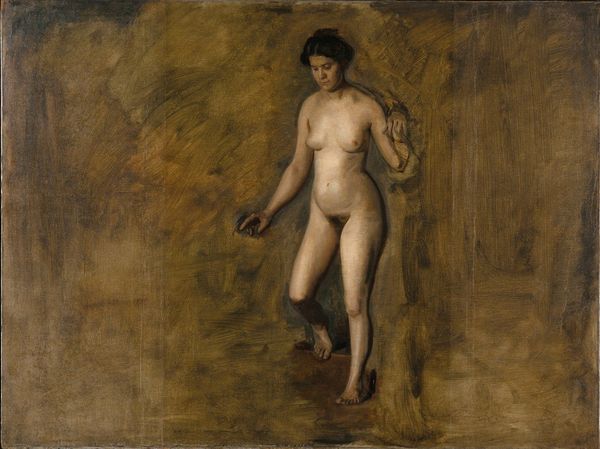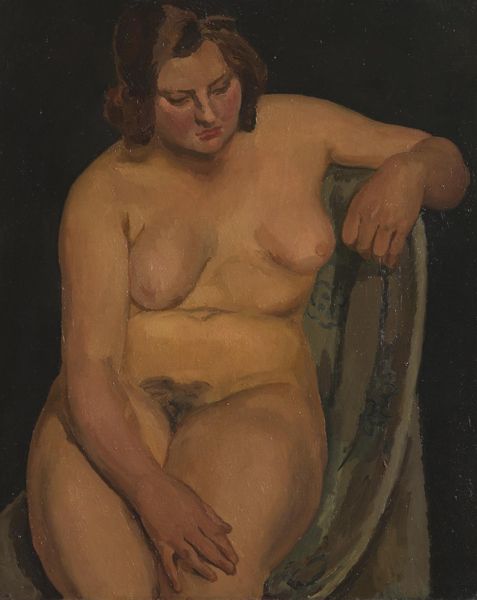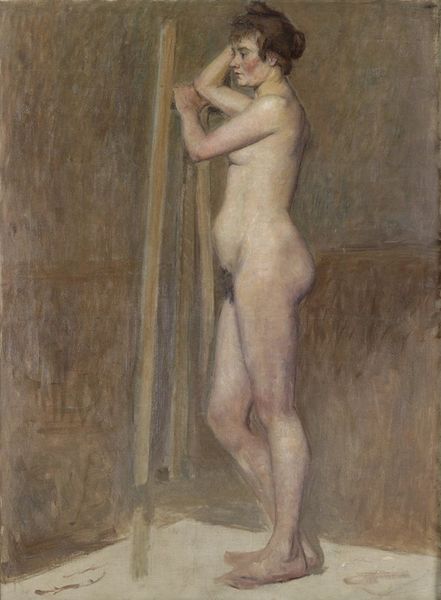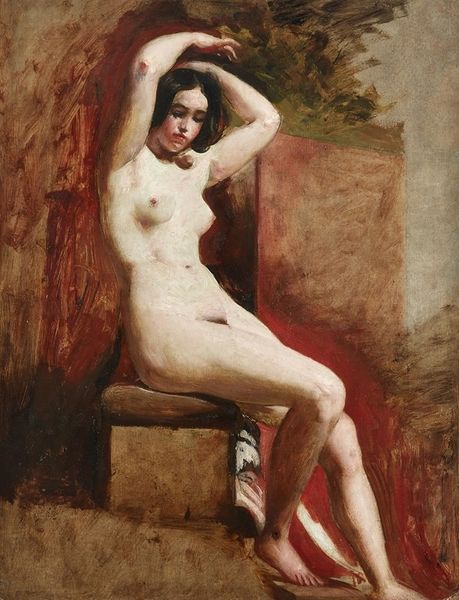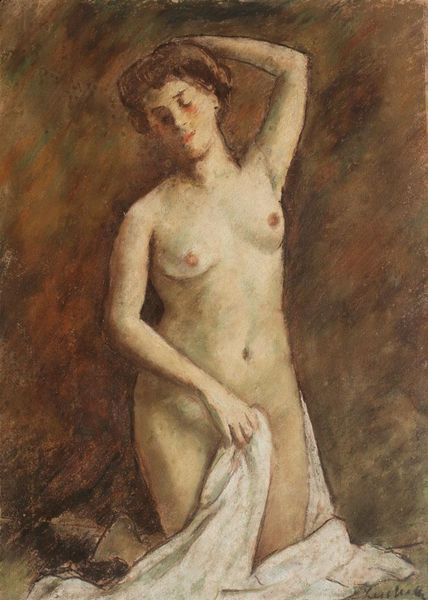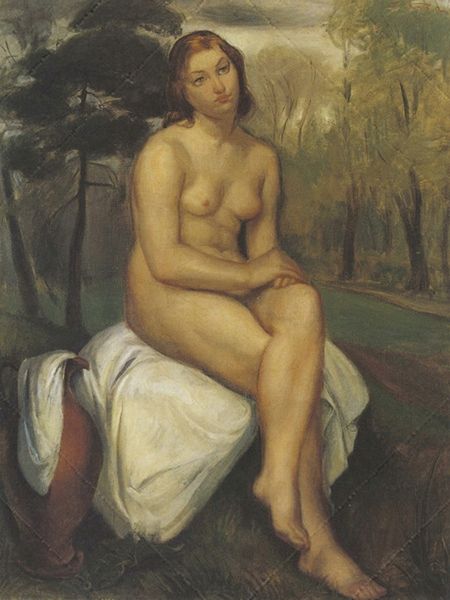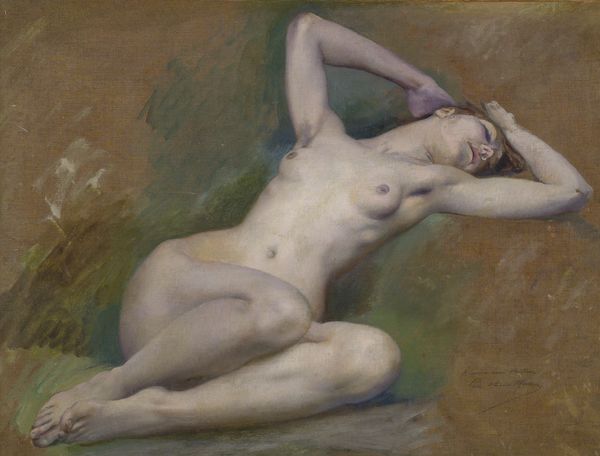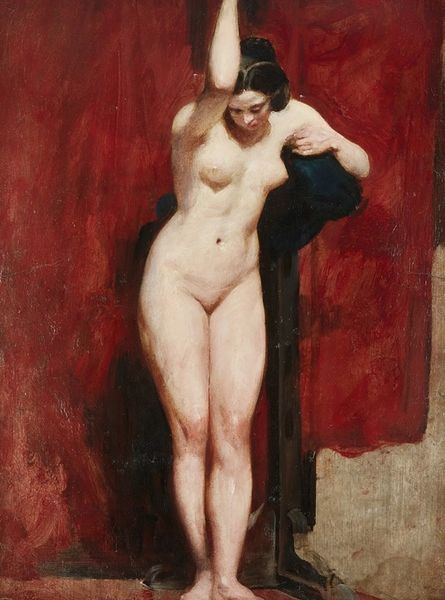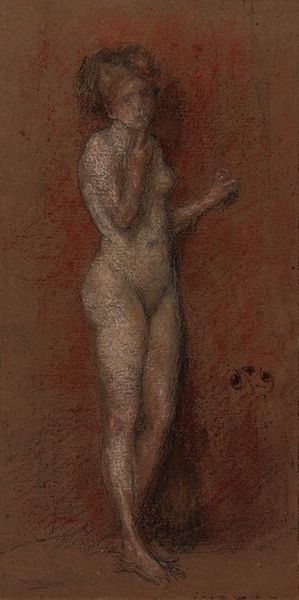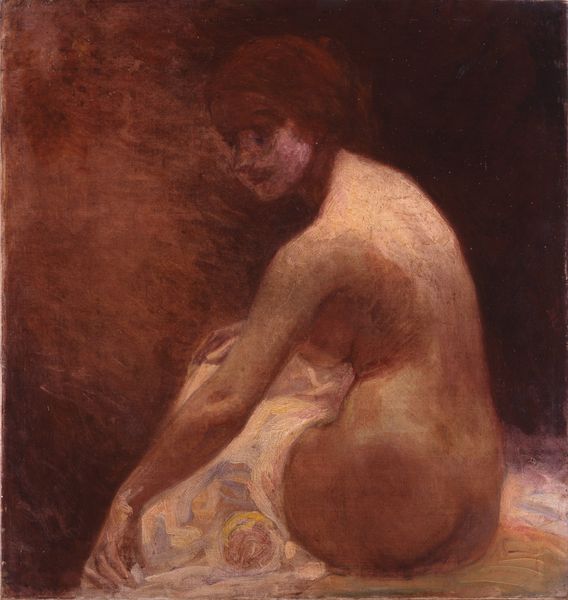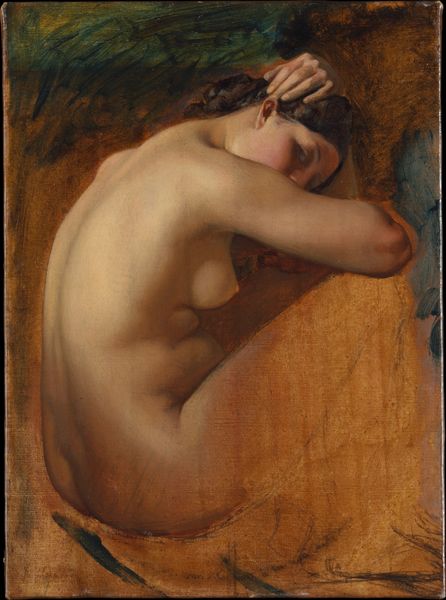
Dimensions: 55.6 cm (height) x 46.2 cm (width) (Netto)
Editor: We’re looking at "Female Nude in the Studio of Thomas Couture" by Lorenz Frølich, created around 1852-1853. It’s an oil painting, currently housed at the SMK. The figure’s pose is striking – both relaxed and yet self-contained. How do we unpack the implications of this studio nude, particularly considering the male gaze inherent in academic art of this period? Curator: That’s a crucial question to pose. This work, typical of its time, invites us to think critically about the representation of women and the power dynamics at play. The setting is the studio, a space usually controlled by men, so the female nude becomes a subject under scrutiny. How does understanding the role of the male artist in shaping our view of femininity shift our interpretation? Editor: It’s unsettling to think about how deeply ingrained this dynamic is within the artistic canon. Where do we even begin to unravel its complexities? Curator: We can begin by acknowledging that this wasn’t a neutral act. It was laden with assumptions about beauty, gender, and the body. We need to acknowledge this power structure, looking at the gaze as a historical and social construct that continues to influence how we perceive and judge female bodies today. How does this historical context affect your personal viewing experience of the piece? Does it challenge you? Editor: Absolutely. It makes me question the visual language I've absorbed, pushing me to confront the objectification of women in art. Seeing this piece as a product of its time and then filtering that against contemporary values really heightens its impact. Curator: Exactly. It is this dialogue between art history and contemporary critical theory that enables us to engage with these works in meaningful ways, understanding both their artistic value and their historical implications within broader discussions of identity, gender, and power. Editor: It's been illuminating to consider this painting within a wider context of social and power dynamics. I appreciate how this encourages critical reflection on historical narratives. Curator: Indeed. Let’s carry these critical perspectives forward as we continue exploring art and its relationship to social justice.
Comments
No comments
Be the first to comment and join the conversation on the ultimate creative platform.

